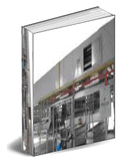Latex Foam Insoles for Footwear
John Woon (Senior Latex Consultant): I’ve studied your latex formulation and the samples you sent me. The following are my observations:
1) Competitor’s products have smoother surface compared with yours i.e. the smoothness when rubbed with fingers.
2) These also have comparatively very small cell structures (pore size) compared to yours. Also, they have more even pore size. This is only visible under microscope or magnifying glass.
3) The competitor’s product also has superior wetting property and breathability compared with as it absorbs water (and hence sweat from the feet) at a very much faster rate. You could confirm this by dropping water drops onto the insole.
4) The superior wetting property and breathability could be the results of deliberate addition of wetting agent (i.e. surfactant) or higher level of foaming agent. When I washed the sample with water, soapy and foamy water was obtained. After drying the washed sample, the wetting property and breathability had markedly reduced.
5) The smoothness mentioned above could be due to both smaller cell structure and the presence of wetting agent/surfactant. This was confirmed by the observation that after washing, the smoothness has reduced.
My recommendation:
1) Increase the level of Terric N20 for your non-gel foam for wetting property.
2) Addition of wetting agent in your gelled foam might affect the gelling. This is therefore best added by spraying onto the foam before the final drying stage.
3) For finer cell structure (pore size) you should adjust your foaming machine to have a longer foaming time during the refining stage at slow speed. Potassium soap of castor oil would give finer pore size and therefore you might want to replace potassium oleate with this in your gel foam recipe.
4) You could also look into the possibility of using silicone-based surfactants either in the recipe or by spraying to achieve the surface smoothness. These surfactants are available from Dow Corning.


















































.jpg)
.jpg)



.jpg)
.jpg)
.jpg)
.jpg)
.jpg)
.jpg)
.jpg)
.jpg)
.jpg)
.jpg)
.jpg)
.jpg)
.jpg)
.jpg)
.jpg)
.jpg)
.jpg)
.jpg)













































0 Comments:
Post a Comment
<< Home